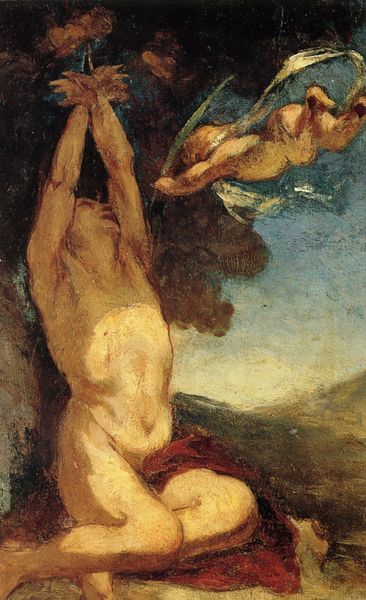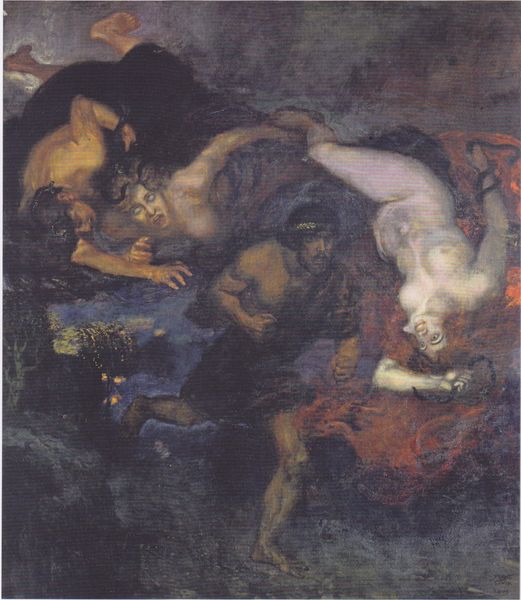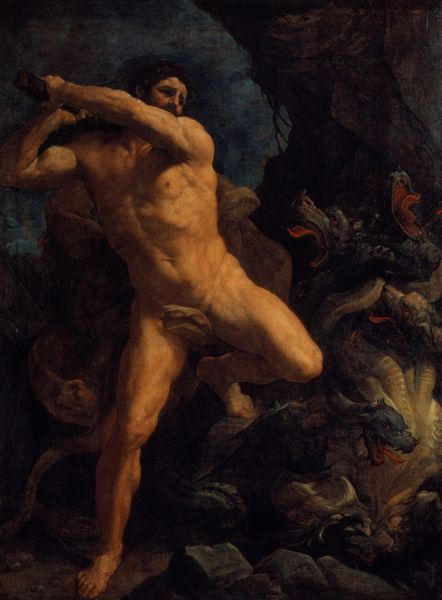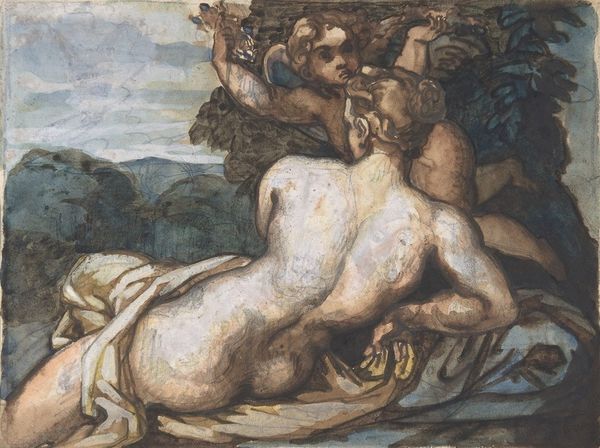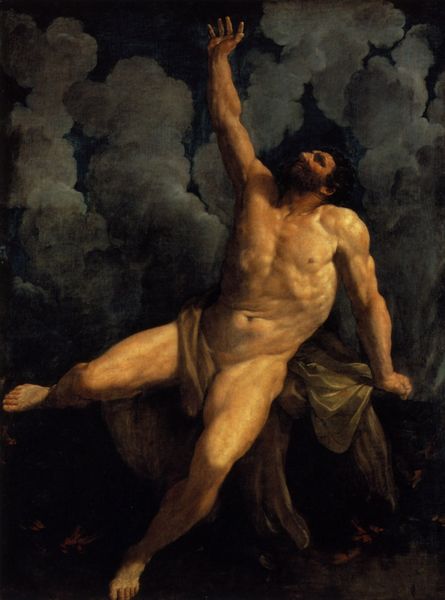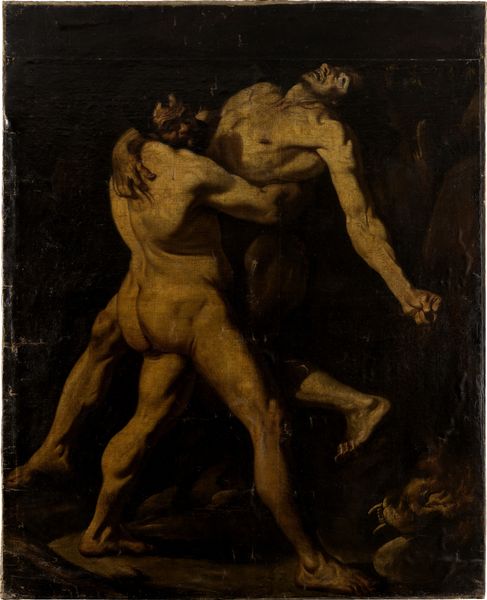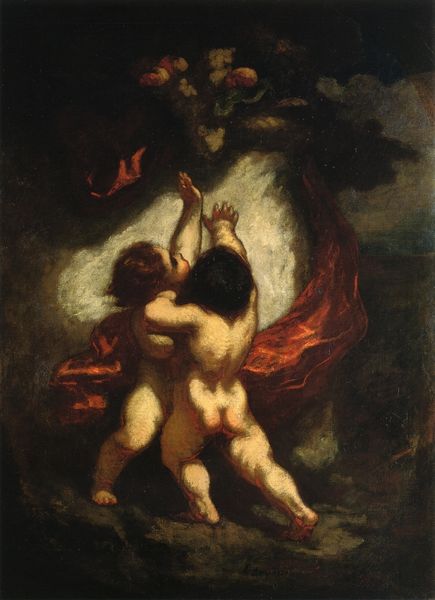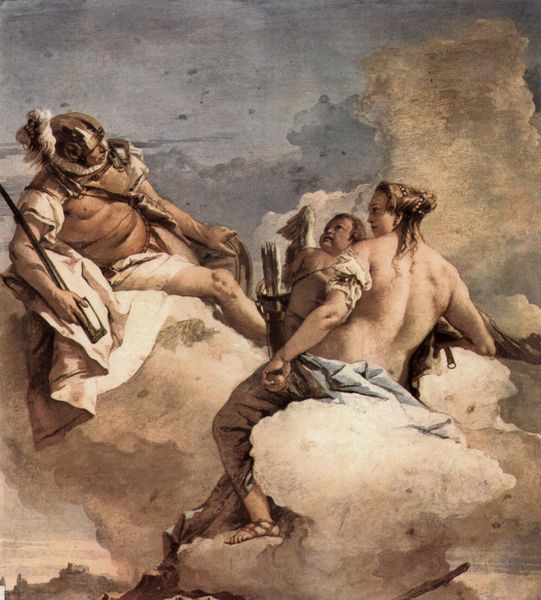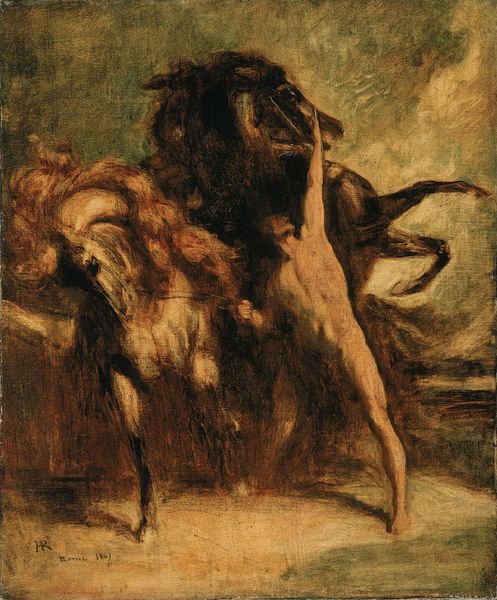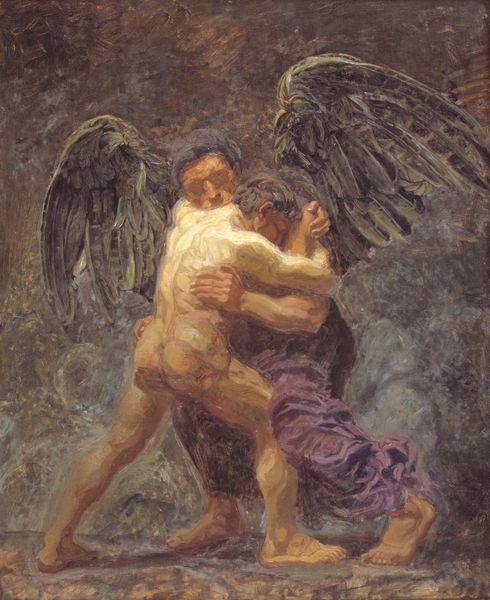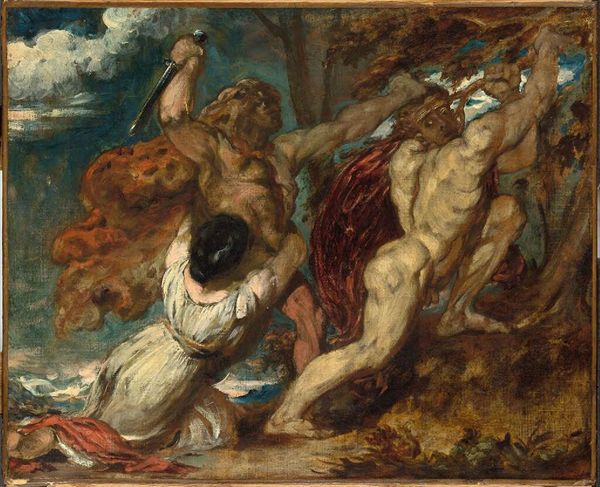
#
abstract painting
#
bird
#
charcoal drawing
#
possibly oil pastel
#
charcoal art
#
oil painting
#
roman-mythology
#
neo expressionist
#
acrylic on canvas
#
underpainting
#
mythology
#
painting painterly
#
watercolor
Dimensions: 253 x 217 cm
Copyright: Public domain
Titian painted *The Punishment of Tythus* in the mid-16th century. As a key figure of the Italian Renaissance, his work often reflected the era’s fascination with classical mythology. This painting depicts the plight of Tythus, a giant in Greek mythology, eternally punished for his assault on Leto. Chained to a rock, his liver is devoured daily by an eagle, only to regenerate, prolonging his torment. Titian’s portrayal is more than a literal depiction of myth; it reflects broader themes of divine retribution. During the Renaissance, the revival of classical stories like Tythus resonated with an audience grappling with social hierarchies and questions of justice. The grotesque and emotive rendering of Tythus’ suffering might be seen as a warning against hubris and transgression, a reflection of the era's moral and social anxieties. How does this brutal scene resonate with your understanding of power, punishment, and human suffering?
Comments
No comments
Be the first to comment and join the conversation on the ultimate creative platform.
